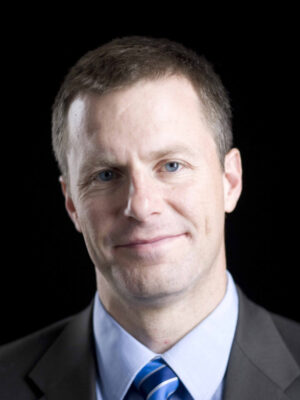 On Wednesday, September 22, 2023, the JRCLS Salt Lake Chapter hosted BYU Law Professor John Fee to discuss the First Amendment--specifically speech, public accommodations law, and religious freedom. Fee’s remarks reviewed the recent Supreme Court holding from 303 Creative LLC v. Elenis. The case posed the question of a graphic artist being compelled to make a wedding website for a homosexual couple where the web designer objected based on personal beliefs. This case fits into a series of cases where the Court is exploring to what extent that the law can be used to protect or compel speech. Fee began his luncheon lecture with a historical review of First Amendment Supreme Court cases, then he discussed what is considered speech, and lastly, he explored the impact of recent First Amendment decisions on religious freedom.
On Wednesday, September 22, 2023, the JRCLS Salt Lake Chapter hosted BYU Law Professor John Fee to discuss the First Amendment--specifically speech, public accommodations law, and religious freedom. Fee’s remarks reviewed the recent Supreme Court holding from 303 Creative LLC v. Elenis. The case posed the question of a graphic artist being compelled to make a wedding website for a homosexual couple where the web designer objected based on personal beliefs. This case fits into a series of cases where the Court is exploring to what extent that the law can be used to protect or compel speech. Fee began his luncheon lecture with a historical review of First Amendment Supreme Court cases, then he discussed what is considered speech, and lastly, he explored the impact of recent First Amendment decisions on religious freedom.
Fee began with a historical overview of First Amendment Supreme Court cases. Certain cases laid the groundwork for the 303 Creative v. Elinis. In West Virginia v. Barnett (1945), the Court ruled that the government could not force school children to recite the Pledge of Allegiance in school. Fee explored the idea that the government cannot force ideas or beliefs on people when he explained that “the government can prescribe a recommended set of beliefs like we would like you to respect, but the government cannot force citizens to a prescribed set of beliefs. The government is not authorized to tell you what to think.” However, Fee explained that recent cases have questioned what a person can be compelled to say.
Next, Fee defined “expressive” speech. The 303 Creative case is not a tough case because the website design is a customized message and clearly counts as speech under the First Amendment. However, not all speech might be as expressive as actual written text on a custom website. Fee pointed out, “web design is certainly speech, but what about whether the floral services could be considered speech in a wedding?” Certainly, there is a different level of scrutiny for content or viewpoint restrictions. The court nuanced the finding on rather narrow grounds in that the conduct as speech requires intermediate scrutiny. Fee explained, “This case might not prove a whole lot where it is less obvious speech. This case is a relief to anyone who does not want to be compelled to express a message they don't like.”
Lastly, Fee talked about the potential impact on religious freedom of recent First Amendment decisions. Because the 303 Creative case was decided on rather narrow grounds, the dissent pointed out this case is not a religious freedom case but a public accommodations case. The Court held 6-3 that the government may not compel Americans to express messages that are contrary to their own personal religious or moral beliefs. Fee explained, “We are kind of in a new era of freedom of religion, even compared to twenty years ago. Freedom of religion is being more robustly protected. There is no balancing needed. Religious organizations can be protected.” The 303 Creative case was decided on the basis of narrow speech protections, and not on religious grounds. The ruling creates a delicate balance between civil rights and freedom of speech while raising challenging questions about the limits of artistic autonomy and the scope of anti-discrimination protections.
A strong community is only as strong as the citizens and those serving in it.
